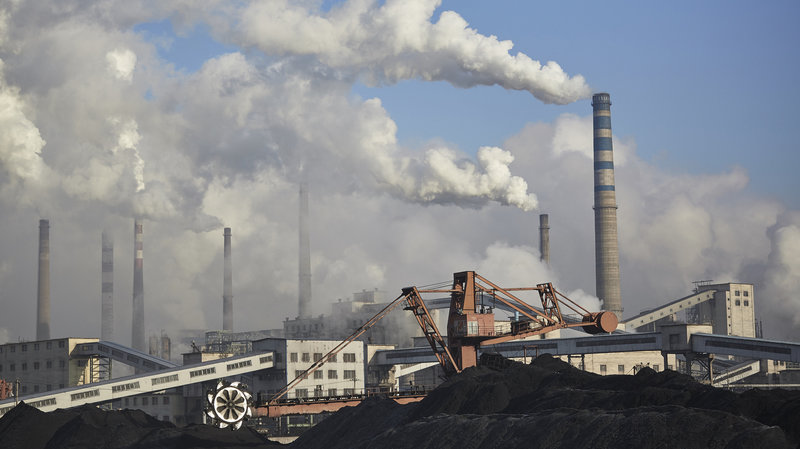Not enough progress on net zero carbon emissions

Japan’s biggest hurdle in achieving significant reduction in emissions of greenhouse gases lies in its energy sector where Japan is one of the biggest consumers of coal and oil
Days before he hosts a global summit on climate change in London, British Prime Minister Boris Johnson announced a new target for the United Kingdom. Johnson vowed to cut carbon emissions by 68 pc as compared to in 1990 levels by the year 2030.
Along with the United Nations Secretary General Antonio Guterres, Johnson will host the virtual climate summit on December 12. Announcing the pledge with new targets, Johnson urged other world leaders to follow with their own ambitious targets at the summit. “We have proven we can reduce our emissions and create hundreds of thousands of jobs in the process – uniting businesses, academics, NGOs and local communities in a common goal to go further and faster to tackle climate change. Today, we are taking the lead with an ambitious new target to reduce our emissions by 2030 faster than any major economy,” Johnson said while making the announcement.
Weeks before the UK’s new targets, several other nations like the European Union, Japan and Canada, too, announced their fresh targets to cut carbon emissions at faster rate than they had agreed to as part of the Paris Agreement during the Cop21 meet in the French capital December 2015.
On October 7, the European Parliament voted a 60pc reduction in greenhouse gas emissions by 2030, as against the current 40 pc currently. The EU Council has already begun discussions on the increased targets and is expected to take a decision on the issue later this month. The EU plans to reach climate neutrality by 2050. According to the European Environment Agency and its latest available data, by 2019 the EU had reduced its overall greenhouse gas emissions by 24 pc compared to 1990 levels. This means that the EU is set to surpass its 2020 emission reduction target of 20 pc. In addition, it has currently in place a binding target of reducing its greenhouse gas emissions by at least 40 pc by 2030, says European Commission.
On October 21, Japanese Prime Minister Yoshihide Suga outlined the plans of his country to also achieve carbon neutrality by the year 2050. Japan’s previous long-term climate strategy was to cut emissions by 80 pc by 2050 from 2010 levels and achieve carbon neutrality “at the earliest possible time in the latter half of this century”.
Japan’s biggest hurdle in achieving significant reduction in emissions of greenhouse gases lies in its energy sector where Japan is one of the biggest consumers of coal and oil for its energy and transport sectors. The government has already committed to use carbon capture and storage in coal-fired power generation by 2030. A carbon removal package is anticipated, which could include support for carbon capture and storage, and green hydrogen. The 2050 goal will inform a revision of Japan’s 2030 energy plan, due to be presented by mid-2021. Under the current plan, renewables are expected to provide 22-24 pc of power generation, nuclear around 22-20 pc with coal, oil and gas still accounting for 56 pc of the energy mix.
The last couple of months have also seen Chinese President Xi Jinping announce his country’s aim for achieving carbon neutrality by the year 2060 and a similar target set by South Korea. A flurry of commitments from Asian investors and development banks to strengthen their climate plans and end coal financing added to the momentum behind a 2050 net zero target, which in recent years has become the benchmark for climate ambition across the globe.
In India, the rapid shift to renewables signaled a quicker than promised slowing down of the carbon emissions by the country which has the biggest number of people living in poverty and as no nation so far has been able to develop and become richer without increasing carbon emissions, India is also potentially one of the biggest growth areas in carbon emissions of the future.
In this respect, India’s progress so far to shift to renewables is encouraging and the country’s carbon emissions have grown the slowest in over three decades last year. But this is also due to a steep drop in electricity demand and while 2020 has been a washout due to the Covid-19 pandemic, it will be crucial to watch how India fares in use of fossil fuels and renewables when the demand for electricity and transport resumes their natural upward journey perhaps by 2022.
But even if India does manage to keep the carbon emissions growth rate in a check and even if all the nations that have set their revised targets for carbon emissions cut achieve them, the earth is still firmly headed for a climate disaster.
Most scientists have already trashed the Paris Agreement and the recent announcements as not being enough and even if the entire world joined in with similar targets, it still would not be enough. The large countries need to set their ambitions even higher and aim to bring carbon neutrality by middle of the next decade.
Only then will the world perhaps have an outside chance to slow down climate change and global warming. But that remains a dream.









